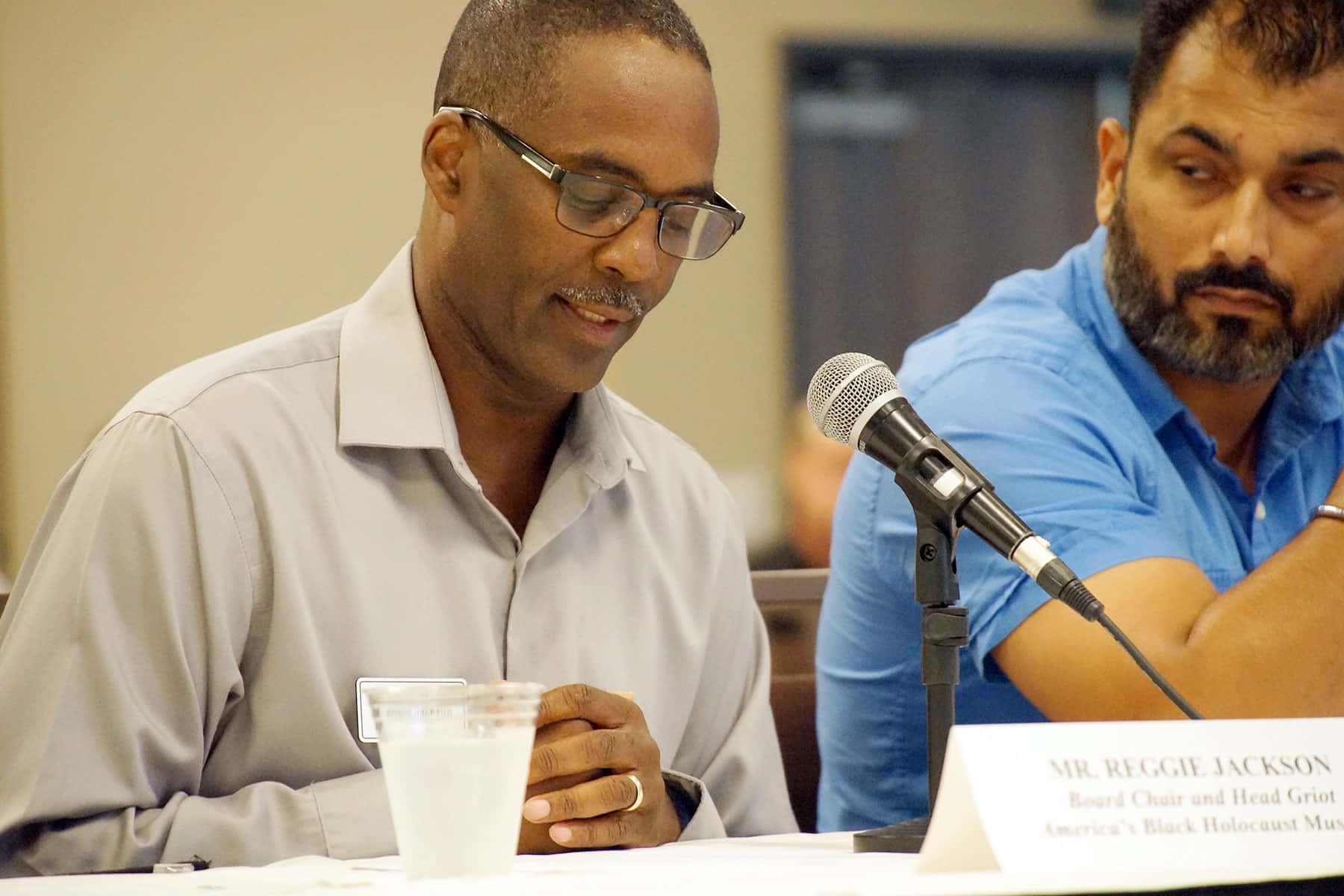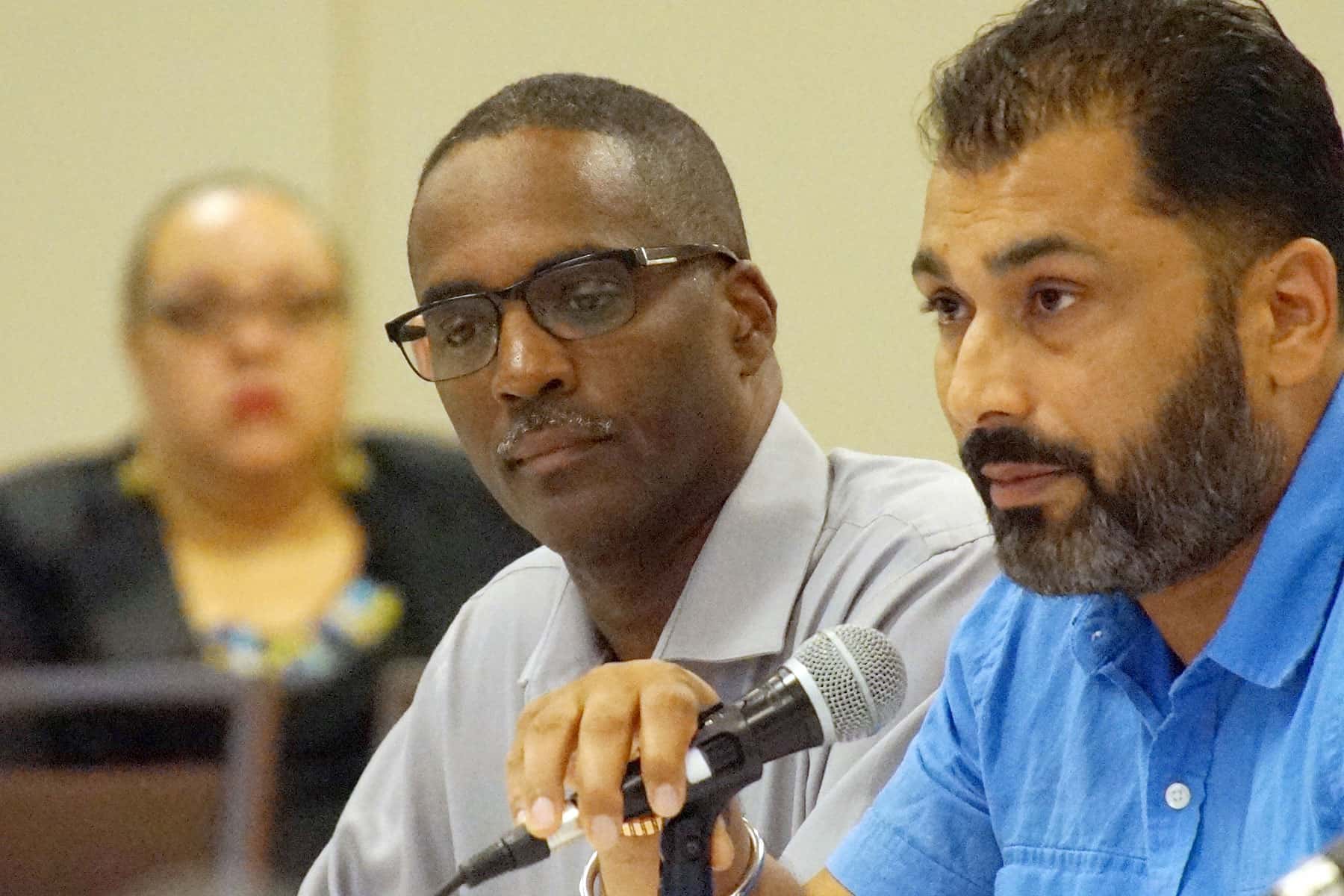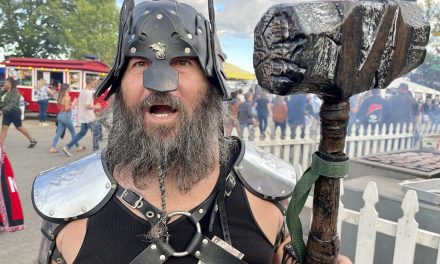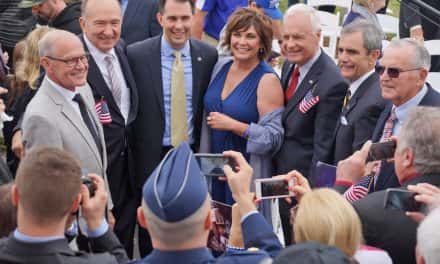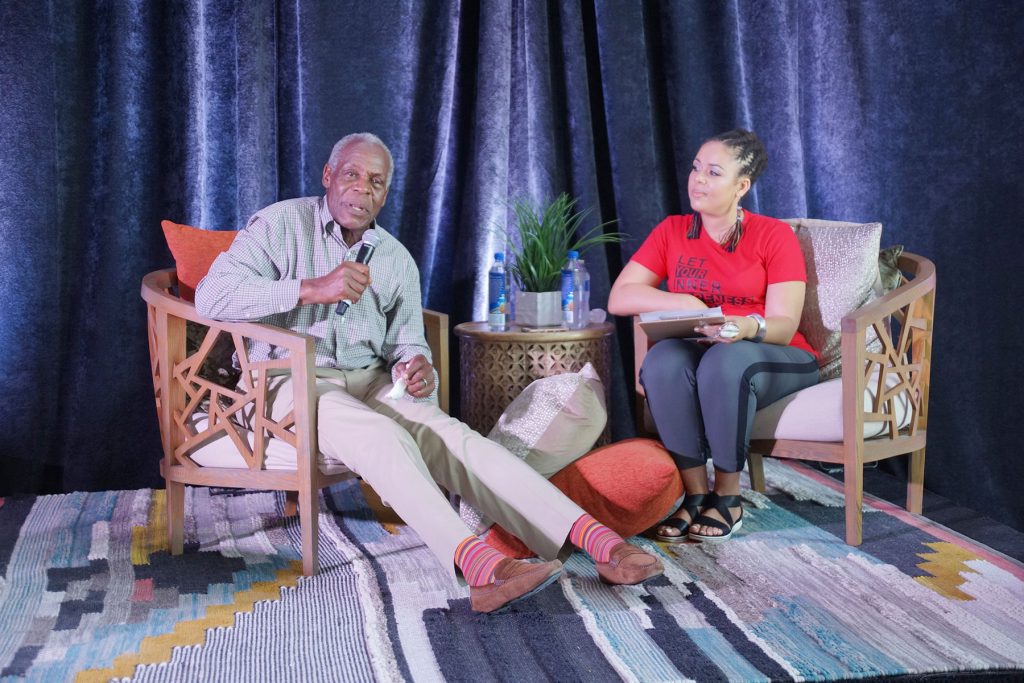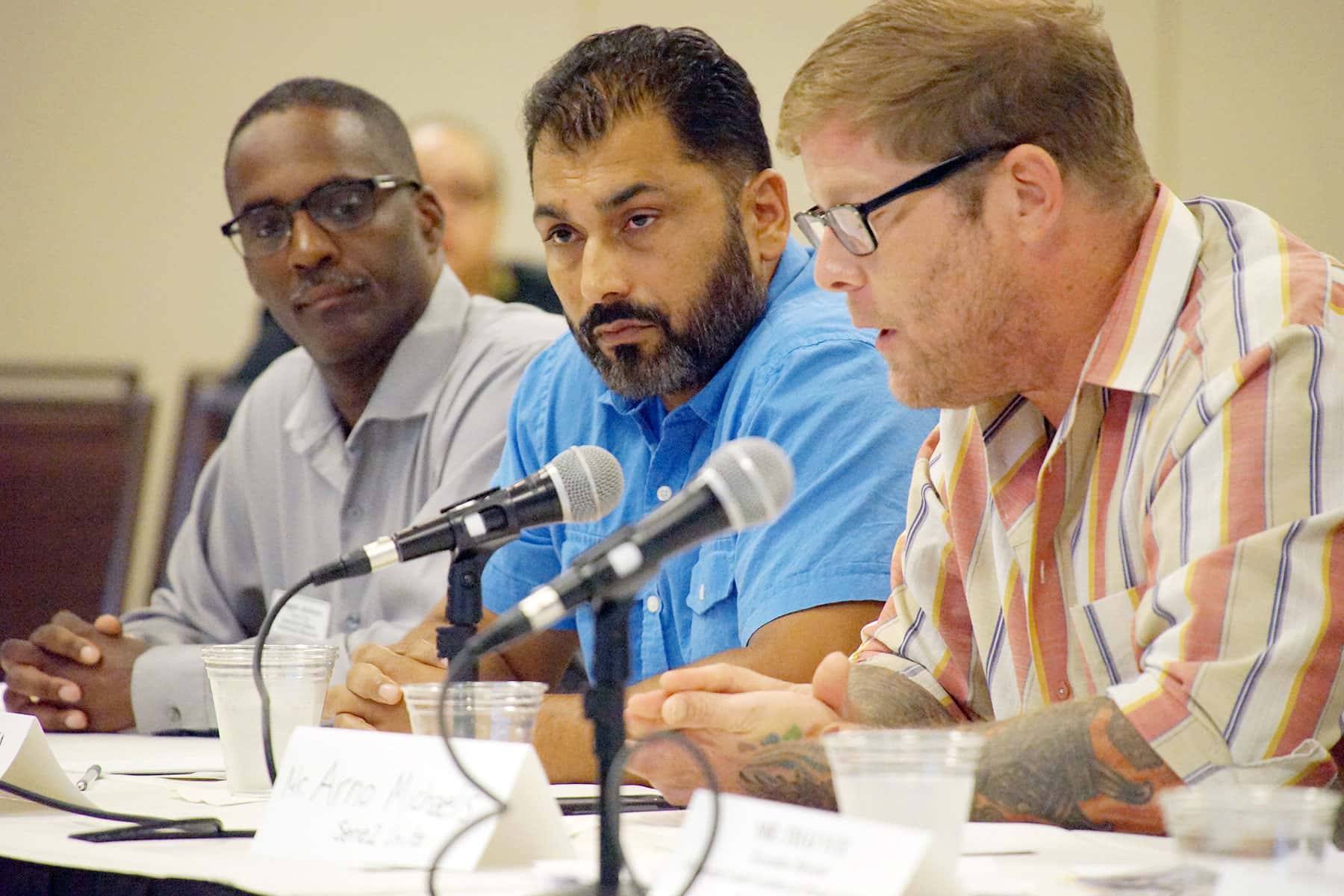
I once had a dream that I was attacked while giving a presentation about the history of racism while I was in a rural community in northern Wisconsin. I think it came from a fear family members had about my safety doing the work I do. It is one of those dreams that I only remembered pieces of but not many details.
Those thoughts of being in danger have become more active lately after the murderous rampage in Buffalo back in May when 10 innocent people shopping or working lost their lives simply because they were Black. Thoughts of hate leading to violence reemerged on the tenth anniversary of a tragedy that touched metro Milwaukee.
On a peaceful Sunday in early August 2012 at a Sikh gurdwara in Oak Creek, Wisconsin a 40-year-old man full of hate for “Muslims” killed six and injured another 4 people. He eventually turned his legally purchased 9mm semi-automatic pistol on himself when confronted by police. Those killed by the gunman ranged from age 39 to 84. The first responding police officer, Lieutenant Brian Murphy, was shot fifteen times and miraculously survived.
One of the people injured in the shooting, Baba Punjab Singh, who was shot in the head and left paralyzed, died in March 2020 as result of complications from the shooting. The murderer in Oak Creek was ignorant enough to believe the Sikh temple was full of Muslims.
My friend Pardeep Kaleka, lost his father, Satwant Singh Kaleka, 65, the founder of the gurdwara in the shooting. He spoke to NBC Asian America about what happened.
“The exit door for him to leave the gurdwara was literally 5 feet away. He could have left at any time. But he knew the people that came that early in the morning were not able to speak English or advocate for themselves.” – Pardeep Kaleka
The shooting that year would be the precursor that warned us of the possibility of many other hate related murders to come. We live in a country where murders happen on a more regular basis than anywhere else on the planet. However, mass shootings get the most attention. Mass shootings related to hatred of specific groups is what frightens me the most.
My mentor, Dr. James Cameron, founder of America’s Black Holocaust Museum, survived a lynching at the hands of 10,000 to 15,000 hate filled Whites in Marion, Indiana on August 7, 1930 when he was only 16-years-old. His two friends, Abe Smith and Tommy Shipp were murdered by that mob. The iconic image of the lynching led to the song Strange Fruit, immortalized by Billy Holiday. In April I went to Marion and visited the cemetery where Abe and Tommy were buried in unmarked graves. The 92nd anniversary of the Marion lynching just passed.
Two days shy of the 82nd anniversary of the Marion lynching is when a White Supremacist shattered the peace in Oak Creek. Cameron told me that the power of hate is that it kills you from the inside. Hate becomes so insidious that it overcomes rationality in some people.
On July 22 of this year a White man from Seattle was arrested in Buffalo, NY for threatening to kill Black people at a Tops Friendly Markets store in Buffalo. This was just weeks after another Tops location was the scene of another hate filled act, where a White man shot and killed 10 Black people and injured another 3 on May 14. In one of the threatening phone calls to the store the man from Seattle said he would be featured on the news if he “shot and killed all of the Black people, including all of the women, children and babies” in the grocery store. This copycat mindset masks a deeply disturbing pattern in contemporary America. It has become popular to gain “fame” in hate filled circles by murdering innocent people.
Hate filled social media platforms have proliferated and grown a large following in the past ten years. Those who frequent these platforms are White men, some intent on taking their hatred to the ultimate level by murdering innocent people because of some characteristic these people share. It might be based on their “race,” religion, immigration status, sexual orientation or being a member of any of a number of marginalized groups.
I can clearly recall my trip to Mother Emmanuel Church in Charleston, SC on the second anniversary of the murder of nine Blacks attending Bible study by a 21-year-old self-professed White Supremacist. It was a very sad day, but it used to celebrate the life of the victims of the shooting. Like several of these other hated filled murderers, the killer in Charleston wrote a so-called manifesto alleging that America hates White people.
In his explanation of why he chose to target one of the oldest Black churches in the country, the killer wrote “I have no choice. I am not in the position to, alone, go into the ghetto and fight. I chose Charleston because it is [the] most historic city in my state, and at one time had the highest ratio of blacks to Whites in the country.” He also stated “Negroes have lower Iqs (sic), lower impulse control, and higher testosterone levels in generals (sic). These three things alone are a recipe for violent behavior…if we could somehow destroy the jewish identity, then they wouldn’t cause much of a problem” and he wrote that there are “good hispanics and bad hispanics, many of whom are White. But they are still our enemies.”
As with many of these articulations of reasons behind hate filled rage and murder, there is a need to define the racial other as “enemies” of White people.
One of the survivors told Sylvia Johnson, a cousin of a pastor killed in the shooting what the killer said before he began to shoot. “I have to do it. You rape our women, and you’re taking over our country. And you have to go.” These two racist tropes, of Black men as rapists and the fear of the Whites becoming a numerical minority, are driving much of the hate being spread on social media platforms which bring out the worst in users.
The hate being spread in these dark corners of the internet, are symptoms of the hatred that has been so prevalent throughout American history. The rise of White Supremacy and hate since the election in 2016, of Donald Trump, is detailed in a 2020 report by the Southern Poverty Law Center.
… racism, antisemitism and Islamophobia — and the intersection of these toxic belief systems is fueling the rise of hate violence and White Nationalism in the United States and around the world. Having moved from the fringes of society to the mainstream, these ideologies now frame national narratives and influence electoral outcomes … The number of White Nationalist groups rose for the second straight year, a 55 percent increase since 2017, when Trump’s campaign energized White Nationalists who saw in him an avatar of their grievances and their anxiety over the country’s demographic changes.”
In February 2020 the FBI “elevated its assessment of the threat posed by racially-motivated violent extremists in the U.S. to a “national threat priority” for fiscal year 2020,” according to CBS News reporting. FBI Director Christopher Wray testified to a House subcommittee in November 2019 about the threat of White Supremacists.
“So first I would say that domestic terrorism generally, in particular, self-radicalized typically lone actors here, represents a serious, persistent threat … we have about 1,000 – sometimes it is closer to 900, sometimes it is above 1,000 – domestic terrorism investigations. A huge chunk of those domestic terrorism investigations involve racially – motivated violent extremist-motivated terrorist attacks, and the majority of those, of the racially – motivated violent extremist attacks, are fueled by some kind of White Supremacy. I would say that the most lethal activity over the last few years has been committed by those type of attackers.”
These attacks are occurring more regularly but we only seem to hear about the mass shootings associated with this hatred. The thousands of other acts they perpetrate, unfortunately, rarely make the local or national news.
On June 12, 2016 a 29-year-old man, killed 49 people and wounded 53 at Pulse, a popular gay nightclub in Orlando, Florida. He was eventually killed by police after a three-hour standoff. In that case, the hatred was against Americans because of actions he deemed as hatred of Muslims by the American military. The shooting was on a night proclaimed as “Latin Night” by the club and most of the victims were Latinos. It was the deadliest attack against LGBTQ community members in U.S. history.
Just over two years later on October 17, 2018, during morning Shabbat services, a gunman killed eleven people while wounding six including several Holocaust survivors. It was the deadliest attack on the Jewish community in the history of the United States. The killer ranted about the Hebrew Immigrant Aid Society (HIAS) supporting immigrants arriving in the country. “HIAS likes to bring invaders in that kill our people. I can’t sit by and watch my people get slaughtered. Screw your optics, I’m going in.”
Less than one year, later shots rang out at a crowded Walmart store in El Paso, Texas. A 21-year-old White man shot and killed 23 Latinos and wounded another 23. It was the deadliest attack on the Latino community in modern American history. The gunman posted a “manifesto” listing the so-called “great replacement” conspiracy theory as his justification.
The rise of of hate is alarming, but not nearly as alarming as the fact the time and time again, angry men with guns are taking their hatred into public places and murdering people. As a member of a group that has been the target of hate based violence for centuries in this country, I am afraid America can’t stop this hate from spreading. Social media has exacerbated the problem of hate. So-called free speech arguments allow this hate talk to spread unabated, poisoning the hearts and minds of more and more people everyday.
Parents need to be aware that their children are being targeted by these groups on video game platforms. There are no innocent “game rooms” where vile hatred does not exist.
When I was a teacher I told my students about this simple concept I called TDA. It stood for thoughts, decisions, and actions. Positive thoughts generally lead to good decisions and produce actions which are helpful. Negative thoughts often lead to poor decisions and actions that are detrimental.
Negative, hate-filled thoughts are propagating in the hidden corners of the minds of far too many Americans. It is just a matter of time before the next mass casualty event related to hate occurs. I’ve used my anger over these cowardly acts and racism in general to devote my life’s work to fighting with righteous anger, all forms of hate. As one of my cousins tells me all the time, “you will never run out of work.” Sadly, he is right.
What many Americans don’t know about the rise of hate and murders of innocent people may one day catch up with me because of the nature of the work that I do. I can’t spend my life in fear though. I continue to fight the good fight.
© Photo
Lee Matz

